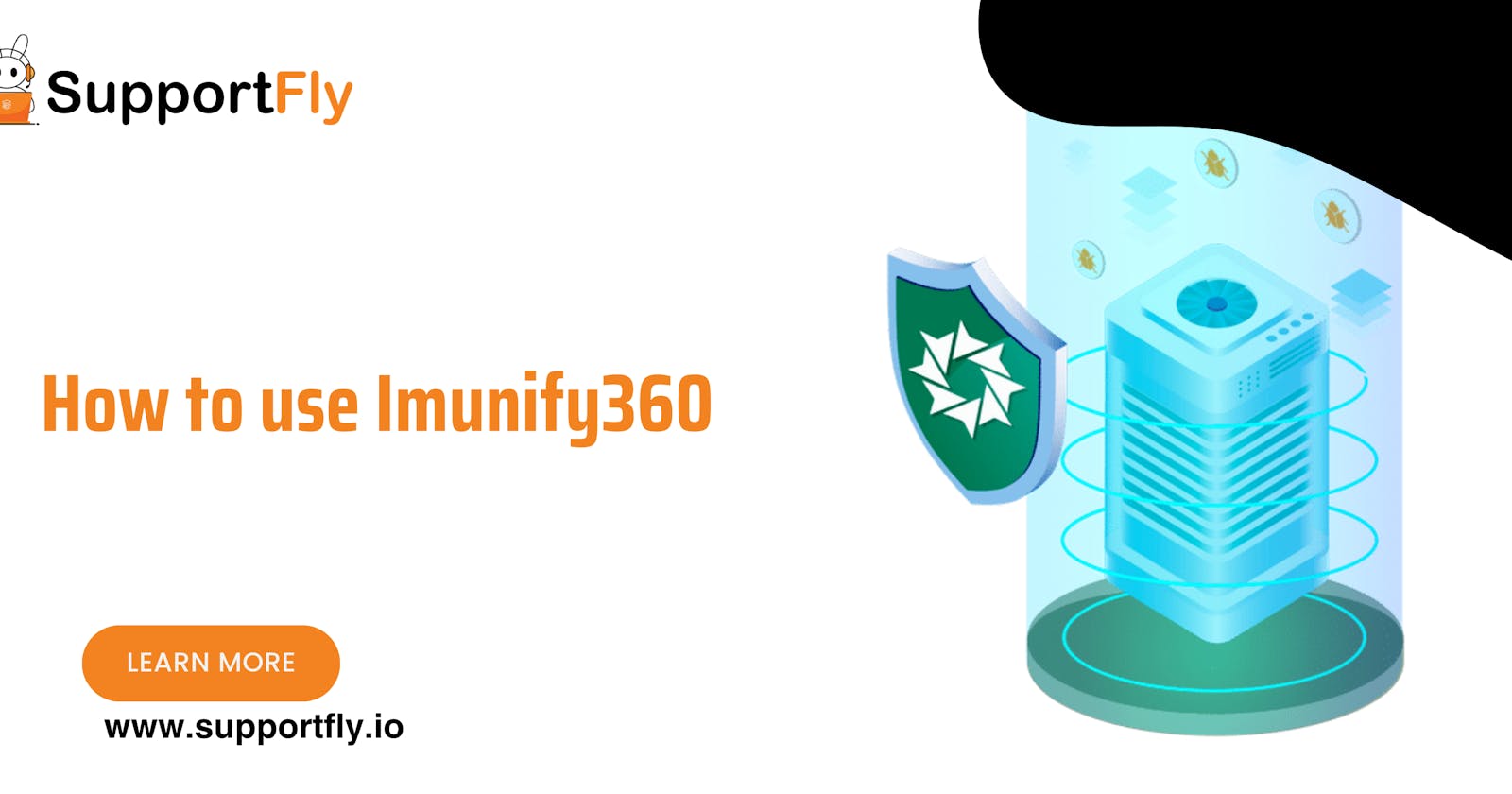In an era where online security is paramount, web hosting environments demand robust protection. Imunify360 stands as a formidable solution, offering advanced security features to shield your websites from various threats.
This guide is an essential part of the Imunify360 management service, and with this, we’ll guide you on how to use Imunify 360 in an easy way. Let's delve into a step-by-step guide on how to unleash the power of Imunify360 for enhanced web security.
How to use Imunify360
Step 1: Accessing Imunify360 Dashboard
To begin, log in to your hosting account or server dashboard. Navigate to the section related to security tools or plugins. Locate Imunify360 in the menu options and click on it to access the dashboard.
Step 2: Overview of Imunify360 Dashboard
Upon entering the Imunify360 dashboard, you'll encounter an overview of the security status. Key metrics and information about recent security events, detected threats, and overall system health is typically displayed on the page.
Step 3: Scanning for Security Threats
Imunify360 offers a powerful scanning feature to detect and eliminate potential threats. Initiate a scan by selecting the scanning option from the dashboard. Choose between a quick scan for rapid checks or a more comprehensive full scan for thorough security assessments.
Step 4: Viewing Security Incidents
Review the detected security incidents in the dashboard. Imunify360 provides detailed information about each incident, including the type of threat, affected files, and actions taken. This insight enables you to address security issues promptly.
Step 5: Malware Cleanup
In the event of malware detection, Imunify360 facilitates a cleanup process. Follow the prompts or options provided to remove or quarantine the identified malware. Regularly perform these cleanup procedures to ensure a consistently secure environment.
Step 6: Web Application Firewall (WAF) Configuration
Imunify360 includes a robust Web Application Firewall (WAF) that adds an extra layer of protection against various web-based attacks. Explore the WAF settings in the dashboard to configure rules, exceptions, and other parameters based on your website's requirements.
Step 7: Advanced Settings and Configuration
For users comfortable with advanced configurations, Imunify360 offers settings that can be fine-tuned to match specific security preferences. Explore these options carefully, making adjustments according to your hosting environment's needs.
Step 8: Real-Time Security Updates
Stay informed about the latest security updates and threat intelligence. Imunify360 often provides real-time information about emerging threats. Regularly check for updates and implement them to ensure your security measures stay ahead of potential risks.
Step 9: Regular Monitoring and Reporting
Imunify360 provides monitoring tools to track ongoing security activities. Set up regular reports to be informed about the security status of your hosting environment. Monitoring helps in identifying patterns, addressing vulnerabilities, and preventing future threats.
Step 10: Utilizing Support Resources
Imunify360 offers support resources such as documentation, forums, and customer support. Familiarize yourself with these resources to enhance your understanding of the security tools and address any queries or concerns effectively.
What Makes Security Easy with Imunify360?
Imunify360 is tailored for shared hosting environments, offering an automated defense against a barrage of cyber threats. Its features are designed to streamline security processes, reducing the workload for server administrators. Let's delve into some common features that make Imunify360 an efficient tool for monitoring and managing server security.
1. Automated Attack Prevention:
- Imunify360 operates proactively to thwart attacks automatically. This proactive defense mechanism helps prevent potential threats before they can exploit vulnerabilities.
2. Centralized Monitoring:
- Shared hosting environments often deal with a multitude of websites. Imunify360 provides a centralized dashboard for monitoring server activity, making it easier for administrators to keep track of potential security issues.
3. Real-time Malware Detection:
- The system employs real-time malware detection to identify and neutralize malicious files promptly. By acting swiftly, Imunify360 ensures that any compromise is addressed in real-time, minimizing the impact on hosted websites.
4. WAF (Web Application Firewall):
- Imunify360 includes a Web Application Firewall that adds an extra layer of protection. It monitors and filters HTTP traffic between a web application and the Internet, blocking suspicious activities and potential threats.
5. Reputation Management:
- The application maintains a reputation management system that helps in identifying and blocking requests from malicious IP addresses. This feature contributes to a safer hosting environment by preventing access from known threat sources.
6. Incident History and Reporting:
- Imunify360 keeps a comprehensive history of security incidents, offering detailed reports on attacks and actions taken. This information is valuable for administrators to analyze patterns, understand the nature of threats, and implement preventive measures.
7. Proactive Defense Settings:
- Administrators can configure proactive defense settings, including Kill Mode, which terminates scripts upon detecting an attack, and Log Only, an option for logging detected attacks without immediate termination. These settings provide flexibility based on the server's security requirements.
8. Simplified Whitelisting:
- Imunify360 allows easy whitelisting of false positives through the Ignore List tab. This ensures that legitimate files and activities are exempted from security actions, reducing the chances of disrupting normal server operations.
Conclusion:
Imunify360 empowers website owners and administrators with a comprehensive suite of security tools. By following this step-by-step guide, you can leverage the full potential of Imunify360 to fortify your web hosting environment against a myriad of online threats. Regular monitoring, proactive adjustments, and timely responses ensure that your websites remain secure in the ever-evolving landscape of cybersecurity.
Imunify360's features are geared towards enhancing the efficiency of security management in shared hosting environments. By automating preventive measures, offering centralized monitoring, and providing detailed incident reporting, Imunify360 contributes to a more secure and manageable hosting infrastructure.
With this detailed guide, we explored How to use Imunify360, which covered the usage of Linux Server, Real-time security updates, its features, and so on. If you need assistance or want to learn more about Imunify360, you can connect with the SupportFly server management company. Our expert support admins are available 24/7 to assist you with any issues.
